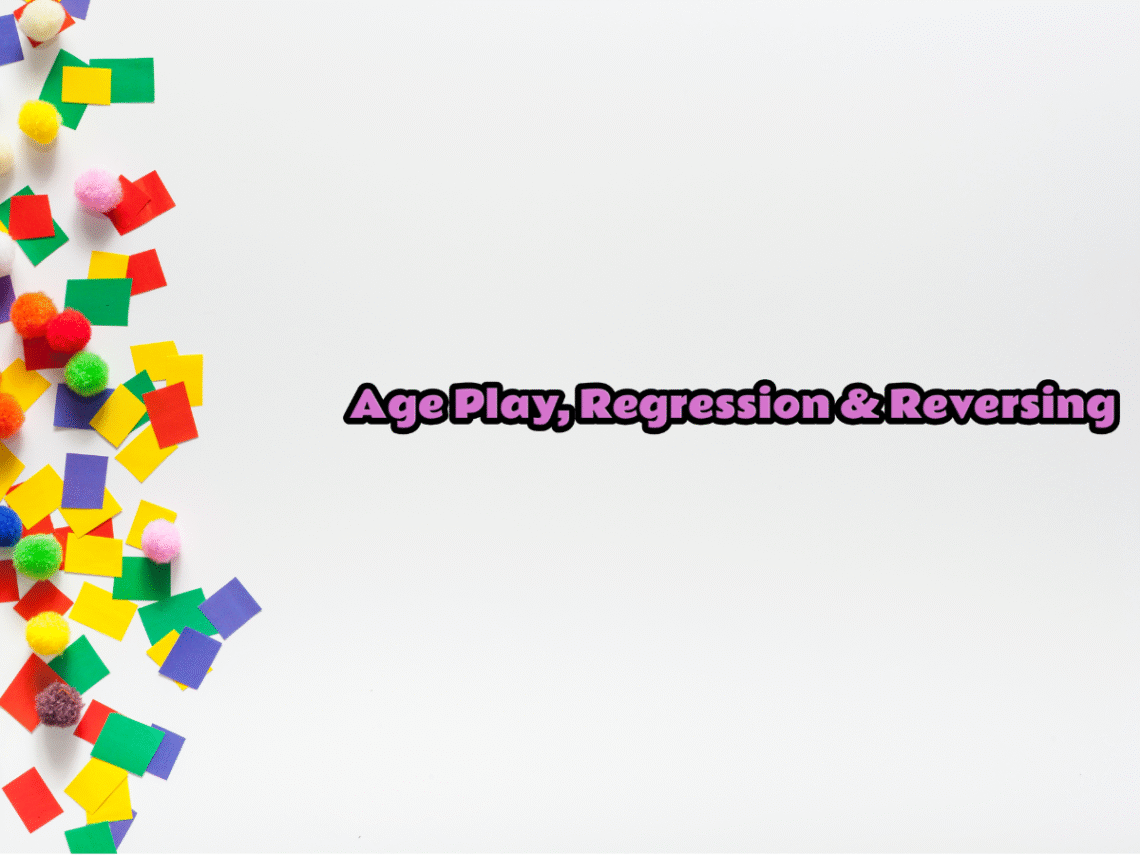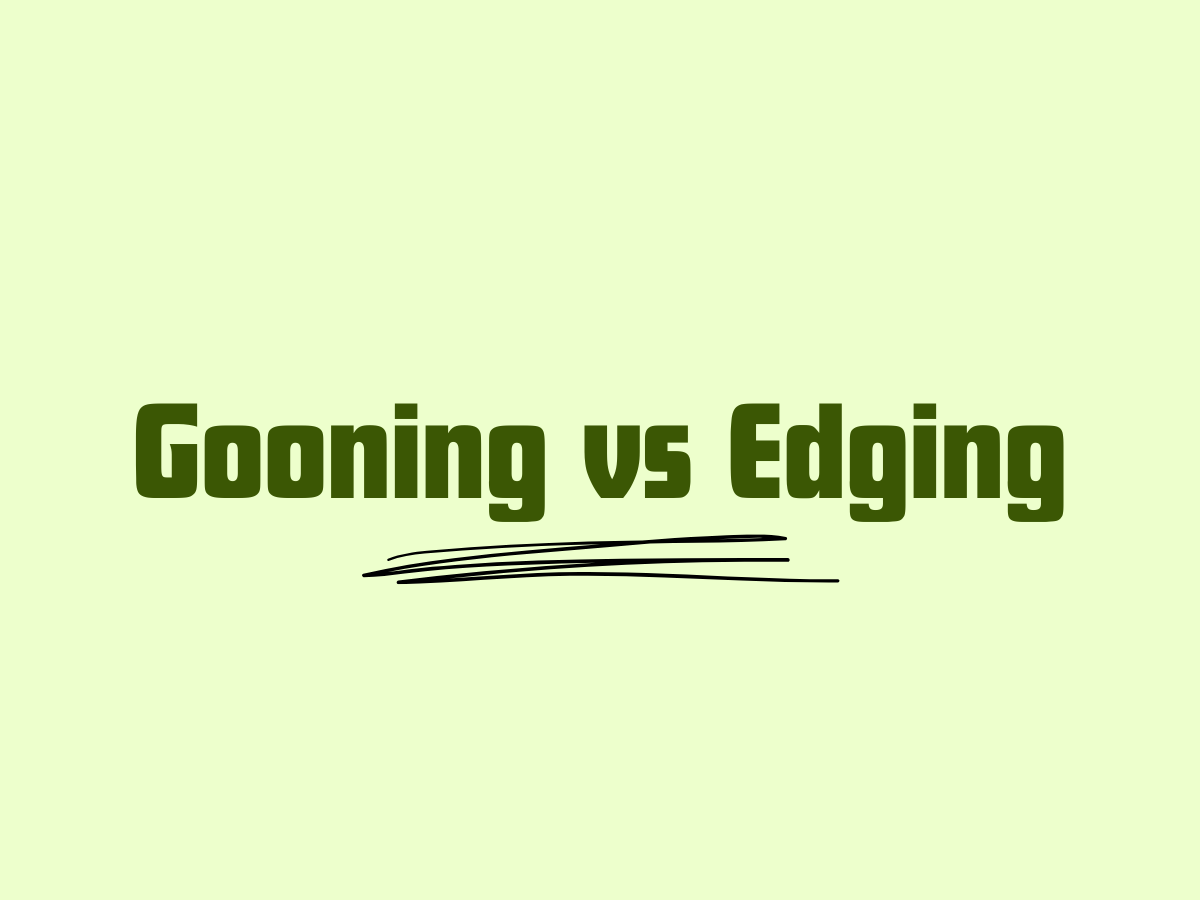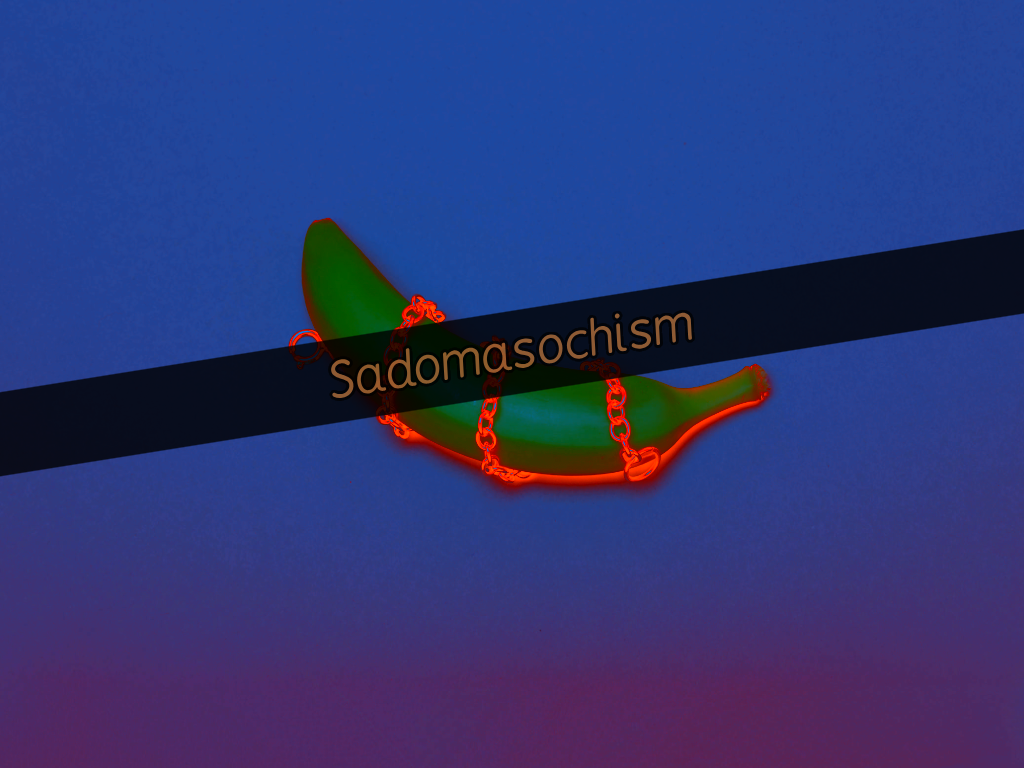Last Updated on October 18, 2025 by Lexi Kisses
Note: This article has been updated. As it originally contained information on the topic that was incorrect.
It’s easy to confuse age play, age regression and age reversing. At a glance, they all seem to be doing the same thing. And, it doesn’t help that the terms are similar.
But, don’t let any of that fool you; none of these words are synonyms for each other, and their differences matter.
To put it as simple as possible:
- Age play is a kink and is exclusively for adults.1
- Age Regression can be voluntary2 or involuntary3, can happen to any age, and is not a kink.
- Age Reversing is voluntary, for any age and can help with soothing emotions and is not a kink.
What is Age Play?
Age play is a form of sexual or non-sexual role play in which one or more consenting adults pretend to be an age different from their biological one.
This type of play is a part of the kink community. It involves setting agreements, and is meant to arouse in many ways, therefore it’s for adults only.
A common place age play is seen in kink is in the caregiver little community (CGL).* In this dynamic, one partner acts the role of a caregiver, while the other acts the role of a “little”. In this case the “little” usually pretends to be younger than they are.
This type of younger roleplay is usually common. But, age play can also include roleplaying as older ages too.
For instance, I act like an older cougar woman to turn my equal in age partner on.
Those who engage in age play do so because they find the power exchange to be arousing, comforting or just plain old fun!
What is Age Regression?
Age Regression (agere) is when an individual of any age, emotionally, socially or behaviorally reverts to an earlier developmental stage.3This can be either involuntary or voluntary.
Involuntary age regression means the regressor has no control over it. Stressful emotions usually trigger this type of agere. When negative emotions become overwhelming, the regressor falls into a younger headspace. This space can vary from fun to traumatic.
When age regression is voluntary it’s done with a medical professional through hypnosis. This is known as a type of age regression therapy.2
What is Age Reversing?**
Age Reversing involves voluntarily getting (reversing) into a child-like mindset.
This usually involves the age reverser; talking like a child, playing with toys, or using items that make them feel like the age that they are trying to achieve the mental headspace of (e.g. binkies).
During this mindset they are fully aware that they are an adult. They are only choosing to take on the mind-set of a child.
Age reversers tend to use it as a way to have fun, relieve stress and regulate emotions by returning to a state of mind that feels safer to them.
Important note: Using any of these as the sole way to deal with stress & emotions can have negative mental health effects.4 3
And, How are they Different?

The biggest difference between age play, regression, and reversing is that age regression & reversing are not kinks and not only for adults.
Age Play
Age play is for adults because it has strong connections with the kink community. It can be non-sexual but it can be sexual too because the people involved are only playing at an age younger than themselves.
Age play is completely voluntary and is not restricted to acting younger.
Age Regression
Age regression is for all ages and is never sexual, even if it’s between adults. This is because the individual is mentally regressing meaning their consciousness is questionable. In other words, they can not give consent.
Age regression can be voluntary or involuntary.
When it’s involuntary, it can become a hindrance to the regressor’s way of living, especially when they need to do “adult” things. When voluntary, it is useful for overcoming fear.
Age Reversing
Age reversing is completely voluntary, for all ages and is never sexual. Those who are age reversers only reverse to a younger age.
*not everyone a part of this community is into age play.
**This is a term I came up with to encompass all of those who do non-sexual age reversing.
- Lewis, Dr Angela. Ageplay: An Adults Only Game. Vol. 11, no. 2, Jan. 2011, www.researchgate.net/publication/265634261_Ageplay_An_adults_only_game. Accessed 18 Oct. 2025.[↩]
- Anbar, Ran D, et al. “Age Regression in the Treatment of Needle Phobia: A Case Report.” American Journal of Clinical Hypnosis, 11 Oct. 2023, pp. 1–6, www.tandfonline.com/doi/abs/10.1080/00029157.2023.2261517#:~:text=In%20this%20case%20report%2C%20we%20describe%20a%2029%2Dyear%2Dold%20who%20underwent%20hypnosis%2Dfacilitated%20age%20regression%20therapy%20to%20improve%20his%20trypanophobia., https://doi.org/10.1080/00029157.2023.2261517. Accessed 18 Oct. 2025.[↩][↩]
- Lokko, Hermioni N., and Theodore A. Stern. “Regression: Diagnosis, Evaluation, and Management.” The Primary Care Companion for CNS Disorders, vol. 17, no. 3, 14 May 2015, www.ncbi.nlm.nih.gov/pmc/articles/PMC4578899/, https://doi.org/10.4088/pcc.14f01761. Accessed 18 Oct. 2025.[↩][↩][↩]
- O’Donovan, Alexander J., et al. “Voluntary Age Regression Entering “Headspace” in a Child with Post-Traumatic Stress Disorder.” Cureus, vol. 14, no. 2, 11 Feb. 2022, www.cureus.com/articles/69541-voluntary-age-regression-entering-headspace-in-a-child-with-post-traumatic-stress-disorder, https://doi.org/10.7759/cureus.22131. Accessed 18 Oct. 2025.[↩]





olá, esse texto me ajudou a entender algo que tenho confundido a um tempo, achei essa a melhor explicação sobre o assunto das que encontrei, muito obrigado!
Thank you for the kind words! I’m happy my article could be informative to you!